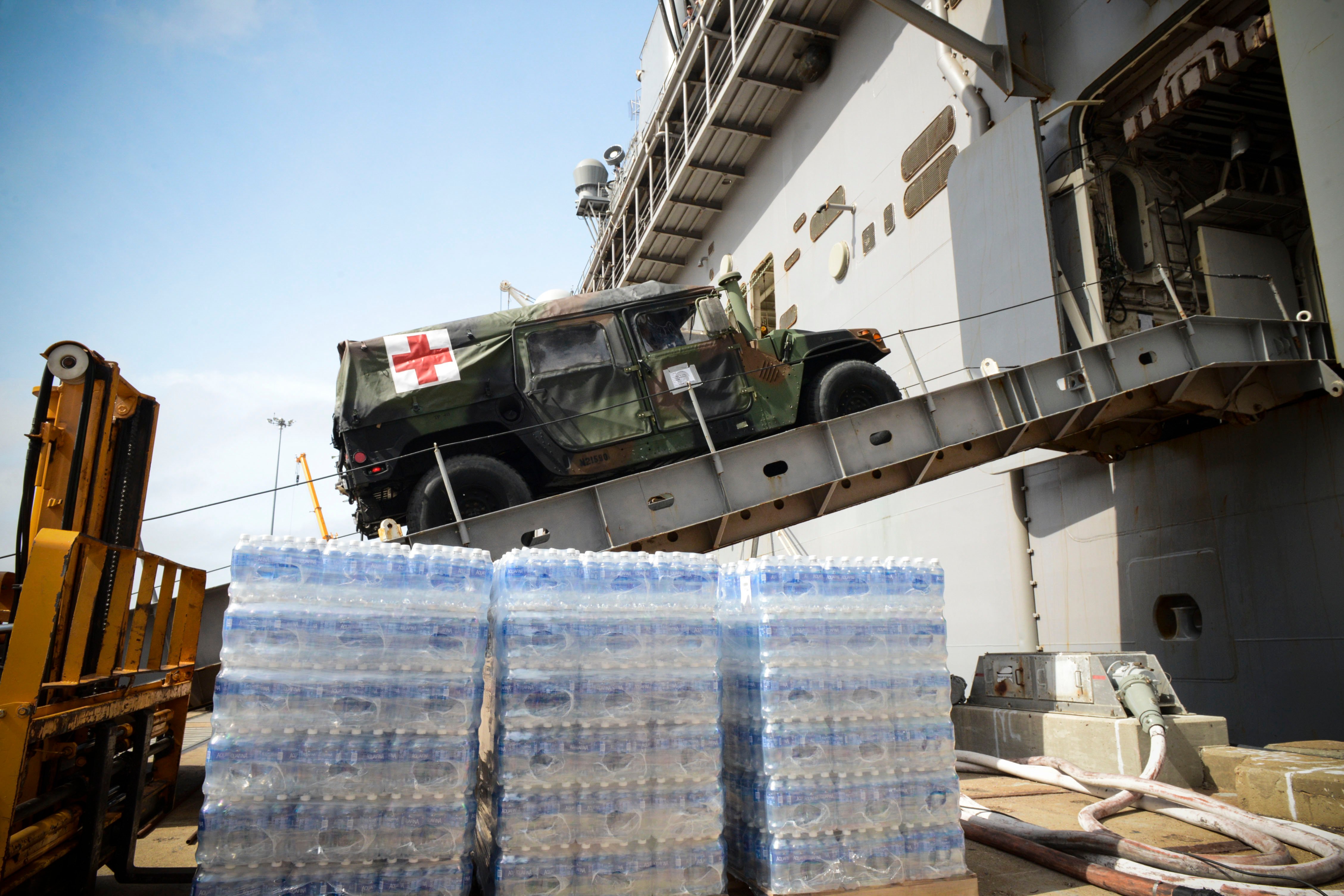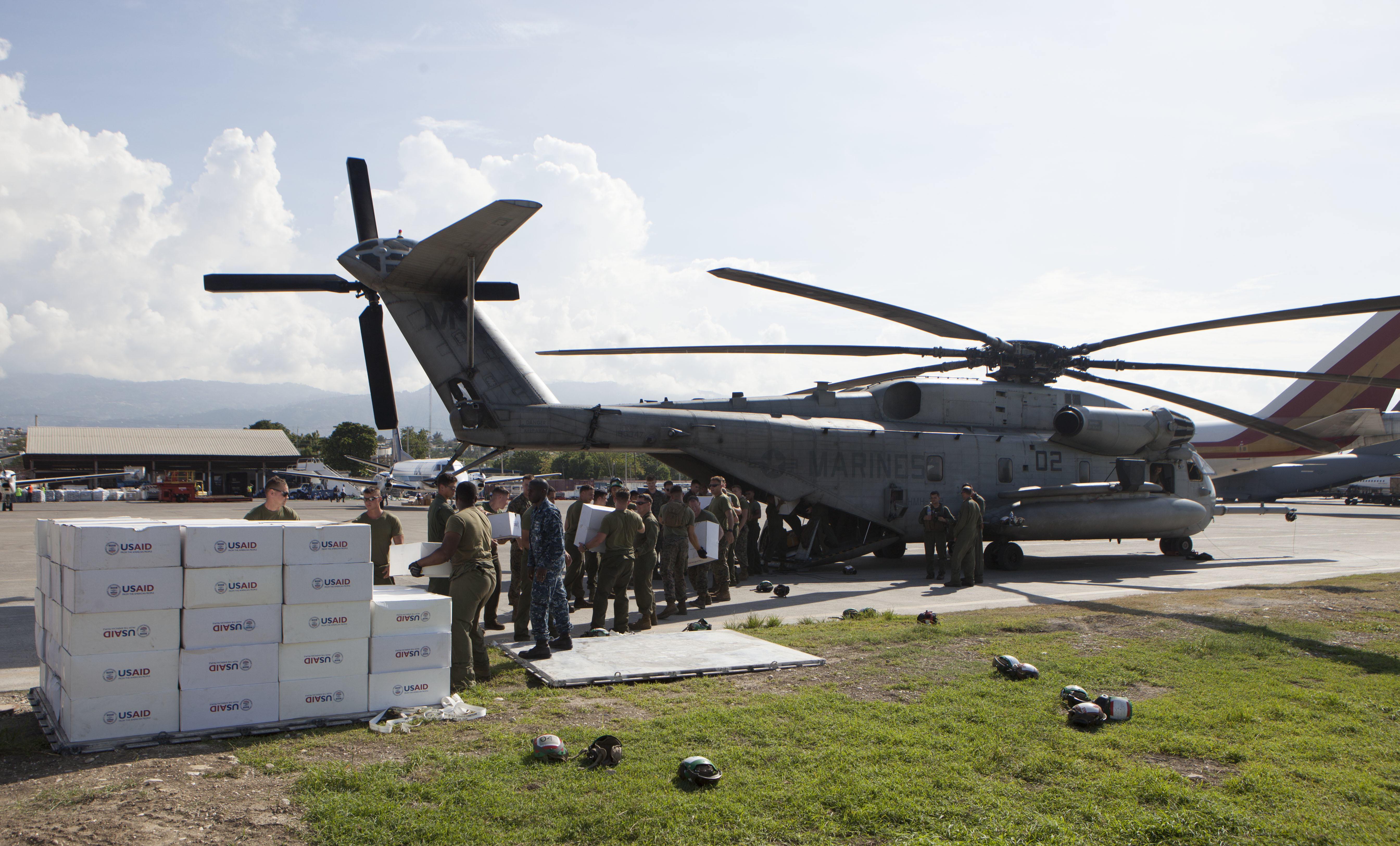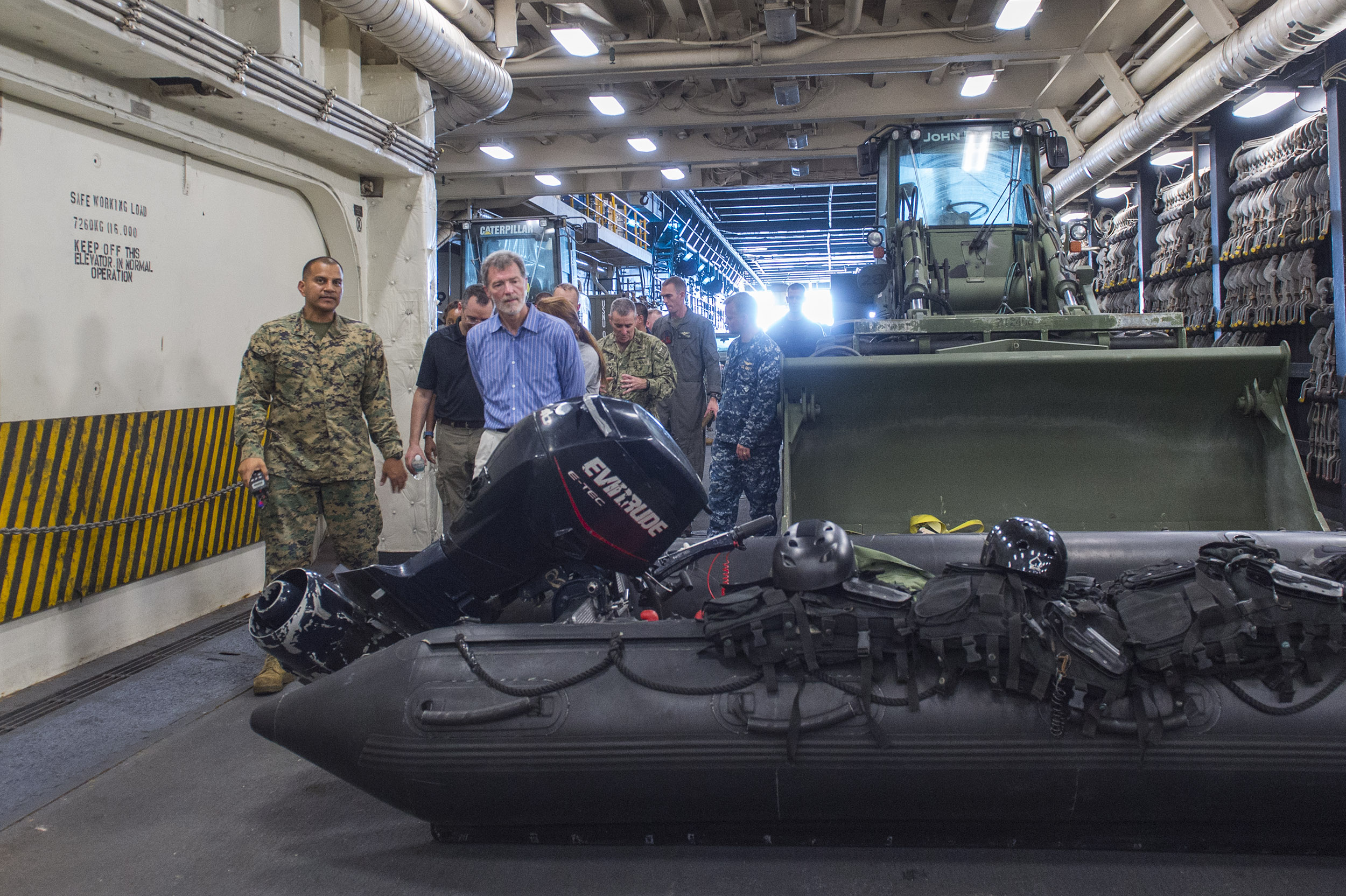
Amphibious transport dock USS Mesa Verde (LPD-19) is in Haiti today and amphibious assault ship USS Iwo Jima (LHD-7) is en route to respond to the island nation that suffered infrastructure destruction from winds and flooding, a death toll of more than 1,000 and now a cholera outbreak after Hurricane Matthew made landfall last week.
About 100 Marines from Special Purpose Marine Air-Ground Task Force (SP MAGTF) Southern Command were already on the island to begin flying water and supplies to areas of the island cut off due to damaged roads and bridges. A Navy P-8A Poseidon maritime surveillance plane out of Naval Station Jacksonville, Fla., has been conducting aerial assessments of the island to help direct aid efforts – which have primarily focused on the area near Jeremie on the southwest peninsula of the island, which has been largely cut off from the capital of Port-au-Prince.
As of Oct. 9, these Marines and other military forces comprising Joint Task Force Matthew delivered 50,000 pounds of aid and supplies with about 300 personnel in Haiti.

Mesa Verde, which along with Iwo Jima belongs to Expeditionary Strike Group 2, arrived on Oct. 9 with 700 sailors and Marines, three helicopters and one landing craft air cushion (LCAC) onboard. ESG 2 Commander Rear Adm. Roy Kitchener flew over the island that day to assess the hurricane damage and met with U.S. Ambassador to Haiti Peter Mulrean to discuss the relief efforts from government agencies and non-governmental organizations.
Iwo Jima departed Norfolk on Oct. 8 with more than 500 Marines from the 24th Marine Expeditionary Unit. Once the larger ship arrives, likely on Oct. 13, “resources currently embarked aboard Mesa Verde, including aircraft, landing craft, Marines and the Navy and Marine Corps command elements, will cross-deck to Iwo Jima and remain on station in Haiti to support continued operations,” according to a Navy statement.
Iwo Jima will also bring along about 225 pallets of supplies, including 800 cases of bottled water, with four helicopters and two LCACs to help access hard-hit areas on the beach and inland.

“The same capabilities that make us a dominant military force also allow us the ability to provide critically-needed assistance and humanitarian aid,” Lt. Col. Christopher D. Hafer, commanding officer of Combat Logistics Battalion 24, said in a Navy statement.
“We are able to work alongside the various U.S. government agencies experienced in providing disaster relief to ensure relief supplies, equipment and manpower get to where they are most needed.”
The Navy had prepared aircraft carrier USS George Washington (CVN-73) with 171 Marines and five MV-22 Osprey tiltrotors and hospital ship USNS Comfort (T-AH-20) with 280 medical personnel in case they were called upon, but U.S. Southern Command has so far not tasked those two ships.





